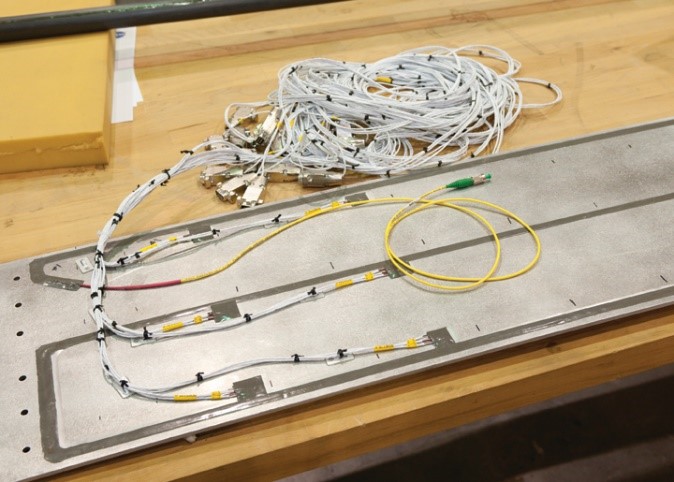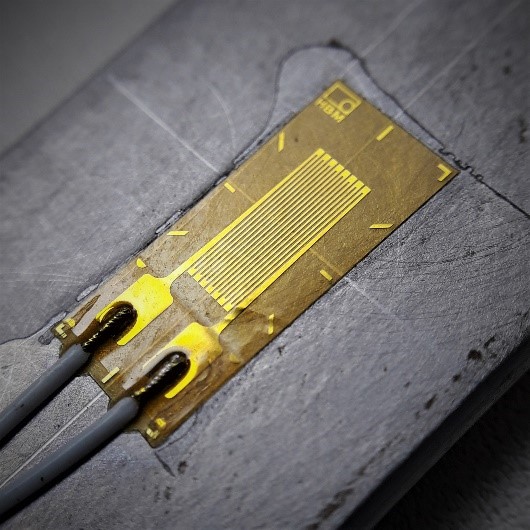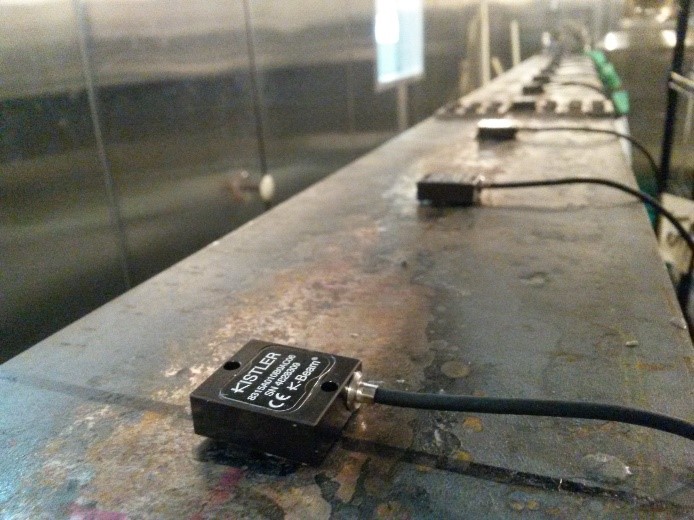With recent advancements in Sensor technology, Structural Health Monitoring (SHM) systems have been developed and implemented in various civil structures such as bridges, buildings, tunnels, power plants, and dams. Many advanced types of sensors, from wired to wireless sensors, have been developed to continuously monitor structural condition through real-time data collection. However, there are still a remarkable number of questions associated with the use of SHM sensors. For designing a SHM system, one of the critical missions is discovering how to determine an appropriate type of sensor that can efficiently meet the scopes of the designed sensing system. This article aims to present a brief review to different types of sensors for structural health monitoring and real-time condition assessment of structures.
Smart Sensors for Structural Health Monitoring
Structural health monitoring heavily relies on collecting accurate and high quality real-time measurements of structural element condition, communicating this information with control system, and signalling necessary warnings should an irregular pattern is ever observed. Sensors for structural health monitoring are designed to facilitate the monitoring process, and enabling maintenance engineers with decision-making tools, which will ensure the safety of the facility, and the public. A typical health monitoring system is composed of a network of sensors being responsible to measure different parameters relevant to the current state of the structure as well as its surrounding environment, such as stress, strain, vibration, inclination, humidity, and temperature.
The latest advances in research on sensor technology for structural health monitoring has been resulted in various types of SHM sensors. The following provides a brief review to the most widely used SHM sensors for structural monitoring.
1. Fiber Optic Sensors
Fiber optic sensors have been under great development in recent years. In civil engineering, these sensors can be used to measure different parameters. Examples include strains, structural displacements, vibrations frequencies, acceleration, pressure, temperature, and humidity. The monitoring of the structure can be either local or global. The focus of local approach is on the material behaviour while the global approach is attributed to monitoring the whole structural performance. Fiber optic sensors have been tested for different applications such as strain monitoring of concrete components in a bridge [Webb et al 2017].

2. Accelerometer for Structural Health Monitoring
An accelerometer is an electromechanical device used for measuring acceleration forces through single or multi-axis directions. Such forces can be static, like the continuous force of gravity on structural components, or dynamic to sense motions or vibrations like when a truck crossing a bridge. The application of accelerometers extends to multiple disciplines, from smart phones to rotating machinery and civil infrastructure.
In the context of structural monitoring, the accelerometers can be used for real-time monitoring the variations of structural dynamic characteristics due to damage or change in structural performance [Lin et al 2015]. The multi-axis models of accelerometers are mainly used to detect magnitude and direction of the proper acceleration. Accelerometers have also a wide use in constructions where there is a need to control the dynamic behaviour of the structure, either short or long term [Hashad 2018]. Under structural applications, measuring and recording of the dynamic behavior of structures is critical for evaluating their safety and viability. Dynamic loads can be originated from a variety of sources such as impact loads (e.g. falling debris), construction work (e.g. driving piles, demolition), traffic loads, earthquake and so on.
Piezoelectric accelerometer: A piezoelectric accelerometer is an accelerometer that employs the piezoelectric effect of certain materials (e.g. quartz) to generate electric charge in response to applied mechanical stress. This type of vibration transducers offer a very wide frequency and dynamic range. Piezoelectric devices are widely used in different industries, environments and applications, allowing to measure dynamic changes in mechanical variables including acceleration, shock and vibration [Read More].
3. Vibrating Wire Traducers
Vibrating wire sensors are a class of sensors that are very popular for geotechnical and structural monitoring purposes. The principal component of the vibrating wire sensor is a tensioned steel wire that vibrates, when pulked, at a resonant frequency that is proportional to the strain in the wire. This mechanism is used to measure static strain, stress, pressure, tilt, and displacement through various sensor configurations.
Vibrating wire sensors operates based on the resultant resonance frequency of vibration, rather than amplitude, to convey the signal; hence, these sensors are relatively resistant signal degradation from electrical noise, long cable runs, and other changes in cable resistance. They have a long term stability and wide usage for monitoring structures such as dams, tunnels, mines, bridges, foundations, piles, unstable slopes, and excavations [Read More].
Vibrating Wire Strain Gauge: Vibrating wire strain gauges are widely used to measure strain in steel or in reinforced concrete. They can be easily embedded in concrete for monitoring strain in piles, foundation, dams, tunnels, etc. Arc-weldable gauges are suitable for arc welding to steel structure such as tunnel linings, piles and bridges.
Vibrating Wire Displacement Transducer: Vibrating wire displacement transducers are basically designed to monitor long term movement in critical structures. These sensors are able to measure minor displacements across joints and cracks in concrete, rock, soil and structural members. In essence, the transducer is composed of a vibrating wire connected to a tension spring. Any displacements of structural elements in the vicinity of the sensor are accommodated by a stretching of the tension spring, which in turn produces a commensurate increase in wire tension. These sensors are mostly used for crack width measures for example in bridges and tunnels [Read More].
4. Linear Variable Differential Transformer (LVDT)
An LVDT (linear variable differential transformer) is an electromechanical sensor used for measuring linear displacement. One can use LVDT in the applications where displacements to be measured are evolving from a fraction of mm to few cms. LVDT sensors are frequently used in structural monitoring applications such as recording displacement on structural members due to live loads and temperature variations [Read More].
5. Load Cells
A load cell is a type of transducer used for converting a mechanical force such as tension, compression, pressure, or torque into a measurable electrical output. This output changes proportionally to the force applied to the load cell. Load cells have been employed for a variety of applications that demand accuracy and precision. These sensors are employed in many historic buildings, where various building materials such as stone and brick have been used [Ceravolo et al 2017].
6. Strain Gauges in Strutural Health Monitoring
The most common type of load cells used in structural monitoring are strain gauges. A strain gauge is a device used to measure strain due to applied force on an object. The most common type of strain gauge consists of an insulating flexible backing which supports a metallic foil pattern. The gauge is attached to the object by a suitable adhesive material. When the subjected to force, the foil is deformed, causing its electrical resistance to change which can then be measured. These sensors are most often used to monitor strain in steel and reinforced concrete structures [Shahsavari et al 2019].

Strain Gauge Rosette: A strain gauge rosette is one type of strain gauge composed of two or more strain gauges that are positioned closely to measure strains along different directions of the component under evaluation. The use of multiple strain gauges enables a more precise evaluation of strain on the surface being measured [Shahsavari et al 2019].
7. Inclinometer (Slope Indicator)
Inclinometers (also known as slope indicators) are precision instruments used to monitor subsurface movements and deformations. Inclinometers are designed to measure horizontal subsurface deformation in a borehole when slope stability is a concern for natural slopes, constructed cut/fill slopes, and deep fill projects. An inclinometer system contains of two main components: inclinometer casing and inclinometer measurement probe. The inclinometer measurement prob is lowered and raised through a specialty inclinometer casing with precision machined grooves which control the orientation of the sensor and provide a uniform surface for measurements. Inclinometers are usually installed in a borehole; however, they can also buried in a trench (horizontal inclinometers), cast into concrete, or attached to a structure. Inclinometers are typically used for:
- Determining whether subsurface movements are constant, accelerating, or responding to remedial measures.
- Checking that subsurface deformations are within design limits, that struts and anchors are performing as expected, and that neighbouring buildings are not affected by ground movements.
- Monitoring settlement profiles of embankments, foundations, and other structural components (horizontal inclinometer).
8. Tiltmeter
A tiltmeter is a sensitive inclinometer used for monitoring very small changes in the inclination of a structure. The measured data provide an accurate history of the movement of a structure, which can be used for early warning of potential structural damage. The sensors are able to measure angles of slope (or tilt), elevation, or depression of an object with respect to gravity’s direction. These sensors are suited for monitoring rotation of structures such as concrete dams or retaining walls [Read More].
9. Acoustic Emission Sensor
Acoustic Emission (AE) Sensors measure high-frequency energy signals that are generated from local sources of stress waves. Discontinuities and defects in a material generate stress waves. AE sensors are able to pick up the stress waves propagated to the material’s surface. By converting these waves into electrical signals, AE sensors are ideal devices to effectively assess the current state of materials under stress. These sensors are mainly used to detect the onset or growth of existing cracks in structural components [Nair and Cai 2010].
10. Temperature Sensors
Civil engineering structures are subject to the environmental changes and therefore it is necessary to measure the temperature that affects physical properties of structures to some extend [Shahsavari et al 2018]. Thermocouples are one of the most widely used temperature sensors to measure the variations of temperature in certain points of the structure. Most of the large concrete structures use temperature sensors, while casting and during construction, in order to have a full control over temperature changes under curing.







Amos Notea
I LIKE READING YOUR DOCUMENTS
Bridge Diagnostic Load Testing | FPrimeC Solutions
[…] without inducing any damage to the structure or cause any reduction to service life. The use of Structural Health Monitoring (SHM) sensors being deployed at critical locations may be warranted to examine bridge performance over time. The […]
rachel frampton
I was watching a documentary film a week ago on how engineers construct bridges, and it came to my concern that what if its structural isn't sturdy enough to survive the next 15 years. I never knew that there is such a thing as the accelerometer which measures the acceleration forces such as the vibration when a truck crosses the bridge. Also, it can be used for real-time monitoring of the variations of structural dynamic characteristics that are caused by change in structural performance.
Kumavat Hemraj Ramdas
Firstly I appreciate to Your research and working mechanisam in ndt and health monitoring of concrete structures. You used to different types of sensors according to structural behavior and it's performance. There is very few engineers developed this type of deep monitoring system in various construction activities ( road, rail, dsm, bridge, canal, buildings and steel structures. Lastly I salute to your work system. I also pursuing phd on ndt test on concrete and it's relationship with strength according to various codes in World, I india country there is no one amendment should be recondired yet.